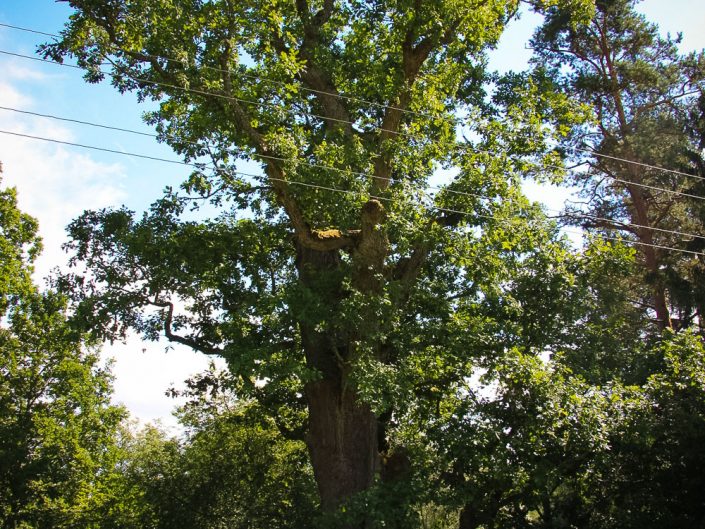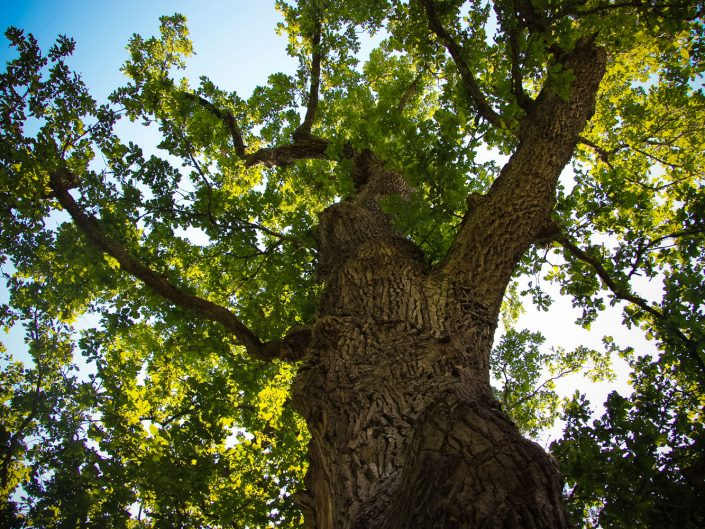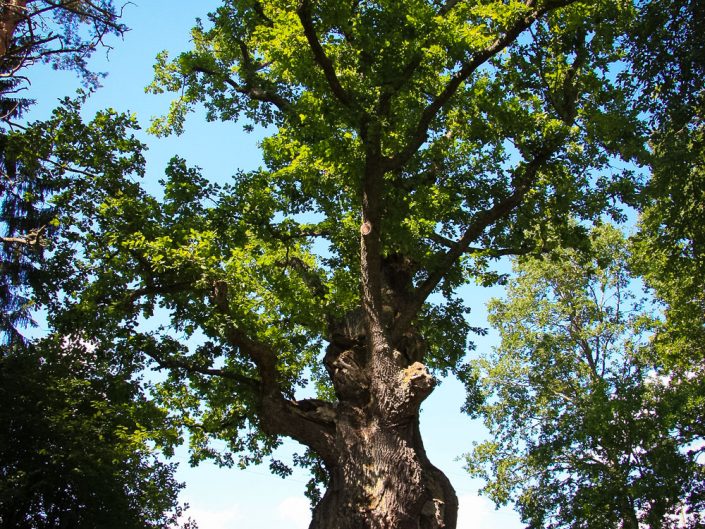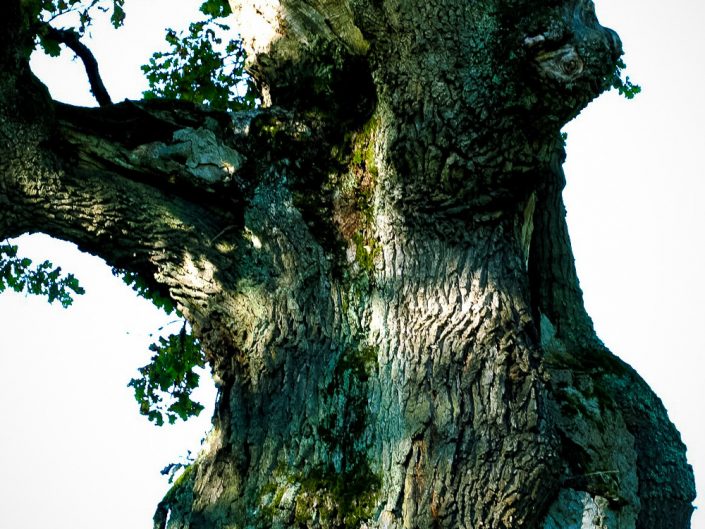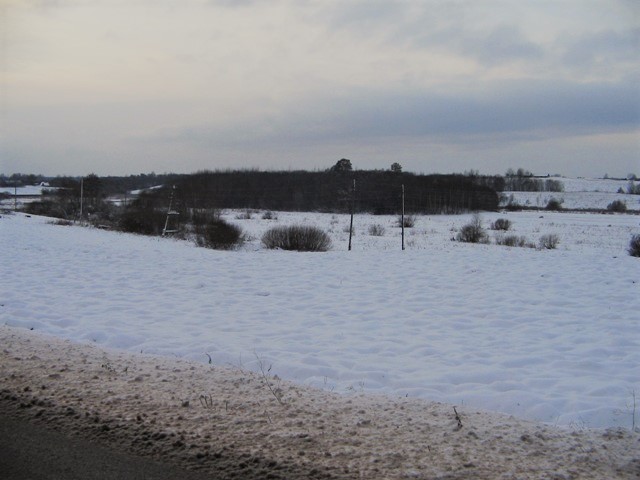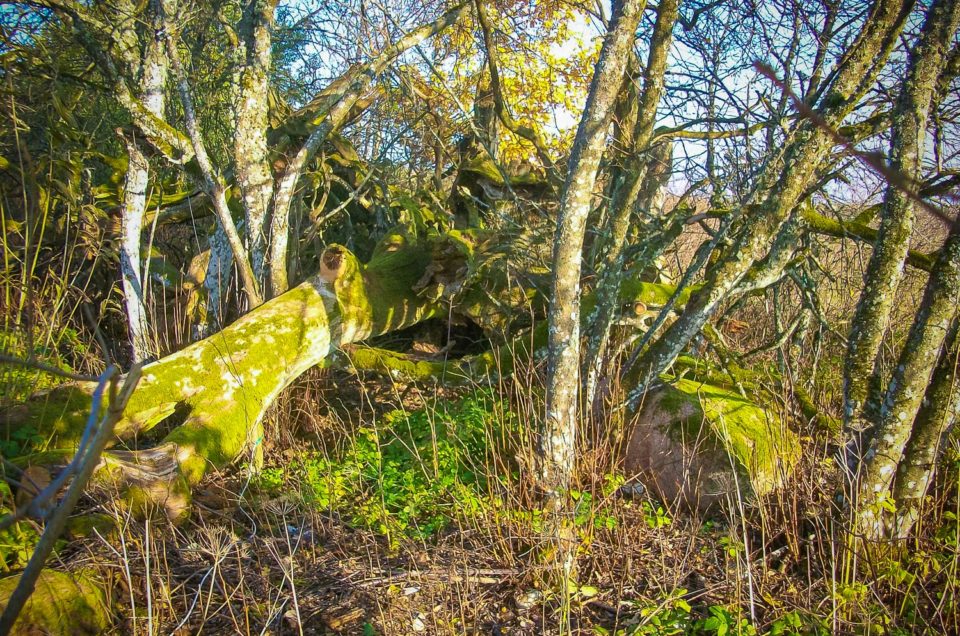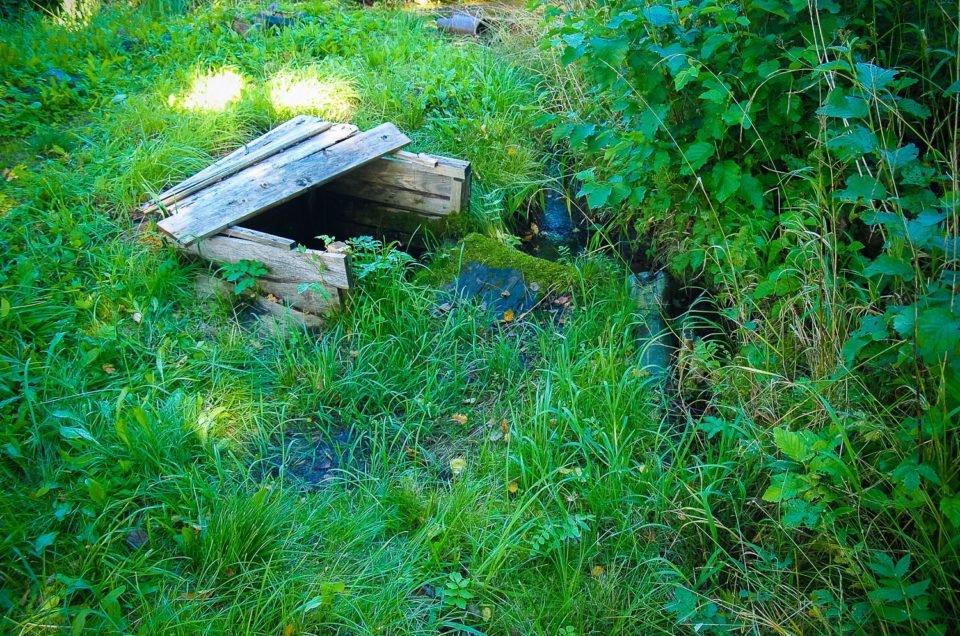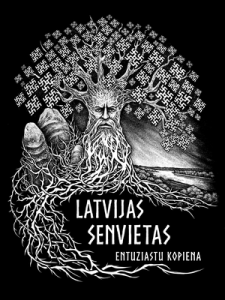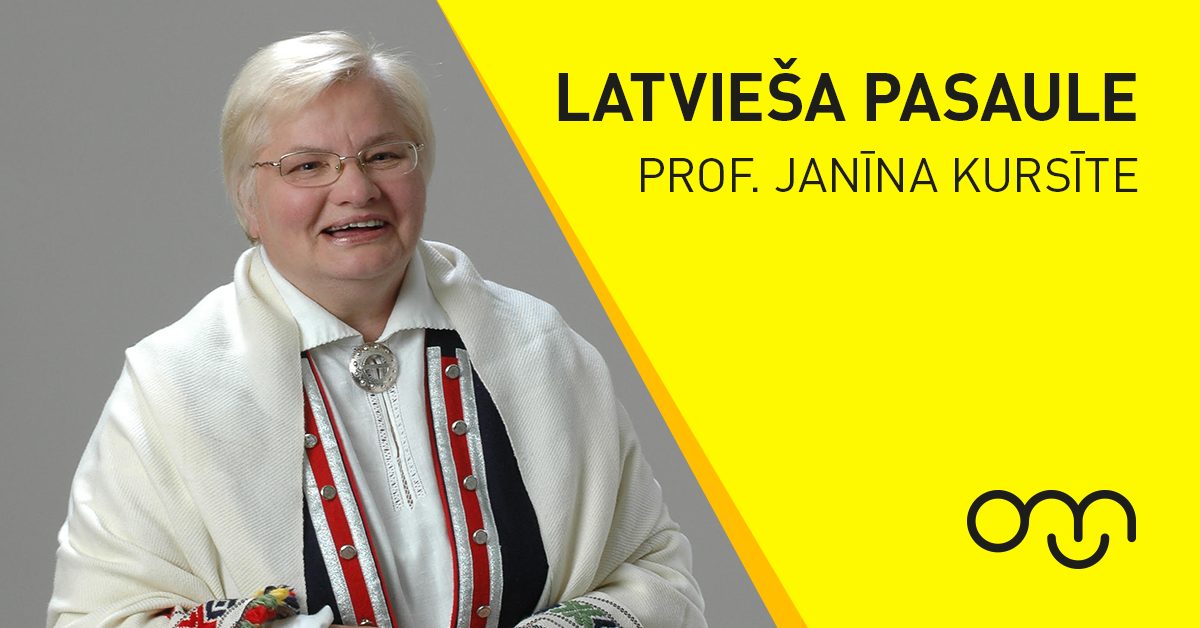State archaeological heritage (State Inspection for Heritage Protection, No 2506). Currently (after the collapse of the Tūtere Oak in 1967) the Sīmanēni Holy Oak takes the first place among the most exalted Latvian holy oaks. Until nowadays only one of the three holy oaks in this area has remained. The first one that could be embraced only by seven men perished during the World War I. The second one was burnt by somebody in 1920–1921. It can be assumed that around this oak there used to be a whole holy oak grove. (J. Urtāns. Latvian Ancient Shrines (Latvijas senās svētnīcas). 1993) The oak’s circumference is 8.2 m, age of 400 years. A secular tree. Situated on the bank of the Gauja River at the Melnupe River’s estuary into the Gauja. Nearby the Valmiermuiža Castle Tower, Irši Park, and Valmiera Theatre are situated.
People used to bring offerings to the oaks. Among them there was also a stone cairn — sacrificial altar. It was dug up during the Soviet Times and fractured into broken stone for highway construction needs (G. Eniņš. 100 Most Secular and Holiest (100 Dižākie un svētākie. 2008). According to other news, there were five unmovable boulders set in a row. In 1890, a poet Rieteklis published a tale that, “at those oaks in the Gauja River Latvians were baptized, but when they came back, they washed away the baptizing in the nearby river.” (J. Urtāns. Latvian Ancient Shrines (Latvijas senās svētnīcas). 1993)
In 1692, Simanēni was marked in a map for the first time. At the beginning there were 3 oaks — on May 23, 1923, one of the oaks was burnt by raftsmen during Summer Festivities, they also burnt the hollow of the Holy Oak. Zirgu Dace who lived in the nearby homestead bricked up the oak’s hollow to prevent the oak from further burning, but it started to wither. Next to the oaks also elm trees grew. Under an elm tree there was a sacrificial altar. It was destroyed in 1959 when it was fractured for asphalt needs while constructing a road to the Sīmanēni homestead. At that time they drove over the elm tree’s roots, so it started to wither and then was burnt down. A photo of the elm tree with the name “Sīmanēni Holy Oak” was published in a book, and travellers used to come to see the elm tree not the oak. People came to the oak to worship the God, they brought food to the dead souls. The Mīlestība Oak (Love Oak) died, because until the times of collective farming not far from it there was a pit filled up with slurry and dung from the cattle-sheds. The pit was regularly emptied taking its substance to fields for fertilizing. During the collective farming the pit was not emptied, it overflew and all its substance reached the oak’s roots, as a result the oak died. Now new branches have grown anew, but the dead ones are too high to reach them and cut off. In the Sīmanēni homestead in 1902–1903 Apsīšu Jēkabs lived. He was often visited by Rieteklis (when he became deaf, he mastered the shoemaker’s craft). To the oak also in the Soviet Times writers and poets came during the Poetry Days.
